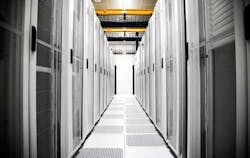Executive Insights: Phillip Marangella of EdgeConneX
The Data Center Frontier Executive Roundtable features insights from industry executives with lengthy experience in the data center industry. Here’s a look at the insights from Phillip Marangella of EdgeConneX.
PHILLIP MARANGELLA, EdgeConneX
Currently serving as the Chief Marketing Officer at EdgeConneX, Phillip Marangella has over 20 years of international marketing, strategy, and business development experience working in the Data Center, Telecom and Technology sectors for leading service providers. Prior to joining EdgeConneX, Phillip most recently worked for Equinix in various capacities in both marketing and business development. In addition, Phillip had stints at Coresite, Verizon, MCI, Nortel and Globalstar. Phillip was also a partner and founder of a tech consulting firm focused on international technology transfer and venture funding of university developed technology. Phillip is focused on developing, evangelizing and executing the marketing strategy and ecosystem development for the company. Phillip holds a Bachelors in Political Science from the University of California San Diego, and a Masters in Multinational Commerce from Boston University.
Here’s the full text of Phillip Marangella’s insights from our Executive Roundtable:
Data Center Frontier: After a year of blockbuster leasing in 2018, the large hyperscalers appear to be less active in procuring new capacity in the first half of 2019. What does the prognosis for hyperscale deals look like in the short and long term? Are these requirements changing in size or structure?
Phillip Marangella: I think it depends on the market, the customer and the deployment type. A few major markets are probably seeing some absorption of capacity, while many other markets, particularly internationally, are still seeing very strong demand and growth.
However, no matter the provider or the location, the one thing that I think is consistent for all providers is their desire to extend their footprints to more markets in order to have their services available in closer proximity to their customers and end users. And, while the requirements for cloud continue to evolve as it matures, and as adoption and usage accelerate, the equally rapid rise of interdependent technologies like IoT, machine learning and AI, gaming and others are also impacting demand for data center capacity around the world. The net-net is that there is and will remain strong global demand for hyperscale data center capacity across core, edge and hyperlocal markets and everything in between.
Data Center Frontier: Edge computing is a trend with many layers and flavors. What types of edge computing are most relevant in 2019? What opportunities does the evolution of edge computing create for future data center infrastructure (and when)?
Phillip Marangella: I agree. The Edge has many layers and flavors because the Edge is defined in varying size, scope and market based the many unique needs and requirements of our customers. Since 2010 we have been building out the Edge based on our customer’s unique requirements and how they define the Edge can range from 10kW to over 10MW. Those network, content and cloud providers will continue to drive the of Edge’s expansion, while many proof of concepts related to autonomous vehicles, smart cities, and other IoT use cases will also help add new flavors to the Edge in 2019. The key is to be flexible, fast and scalable to support the dynamic requirements for these edge use cases.
Cabinets inside an EdgeConneX data center. The company has built a network of data centers focused on the needs of edge content providers. (Image: EdgeConneX)
Data Center Frontier: The shift of enterprise IT workloads into third-party cloud platforms and colo facilities appears to be continuing. What strategies and services are proving most useful in working with enterprises in this transition?
Phillip Marangella: Expanding on my response to the previous question, the cloud continues to be a major driver of the Edge as CSP’s look to place more cloud on-ramps, applications and compute in locations as proximate to end users as possible, thus ensuring an optimal quality of service and experience because of the lowered latency, improved performance and increased security of deploying near their customers.
Meanwhile, the need to collaborate with network, storage, security and managed service providers that can help provide integrated, hybrid and multi-cloud solutions are also key benefits to enterprises in local markets and mitigates many of the cloud adoption impediments. The goal is to bring the cloud to the enterprise, rather than the enterprise to the cloud and provide a localized end-end solution customers.
Data Center Frontier: The rise of AI has boosted the use of new compute hardware to accelerate specific tasks, including GPUs, FPGAs, ASICs, TPUs and neural processing hardware as well as more powerful CPUs. How might the emergence of application-specific hardware impact data center design? What are the opportunities and challenges?
Phillip Marangella: We are already seeing the result of these trends as customers are asking for both more proximate deployments at the Edge, but also more dense deployments requiring greater power requirements per rack that can easily exceed 15kW to 20kW to even more than 30+kW/rack in some instances. Providers that can give customers the assurances and peace of mind that their deployment can scale in power both per rack and for future capacity growth will be a compelling differentiator and an opportunity for certain providers.

